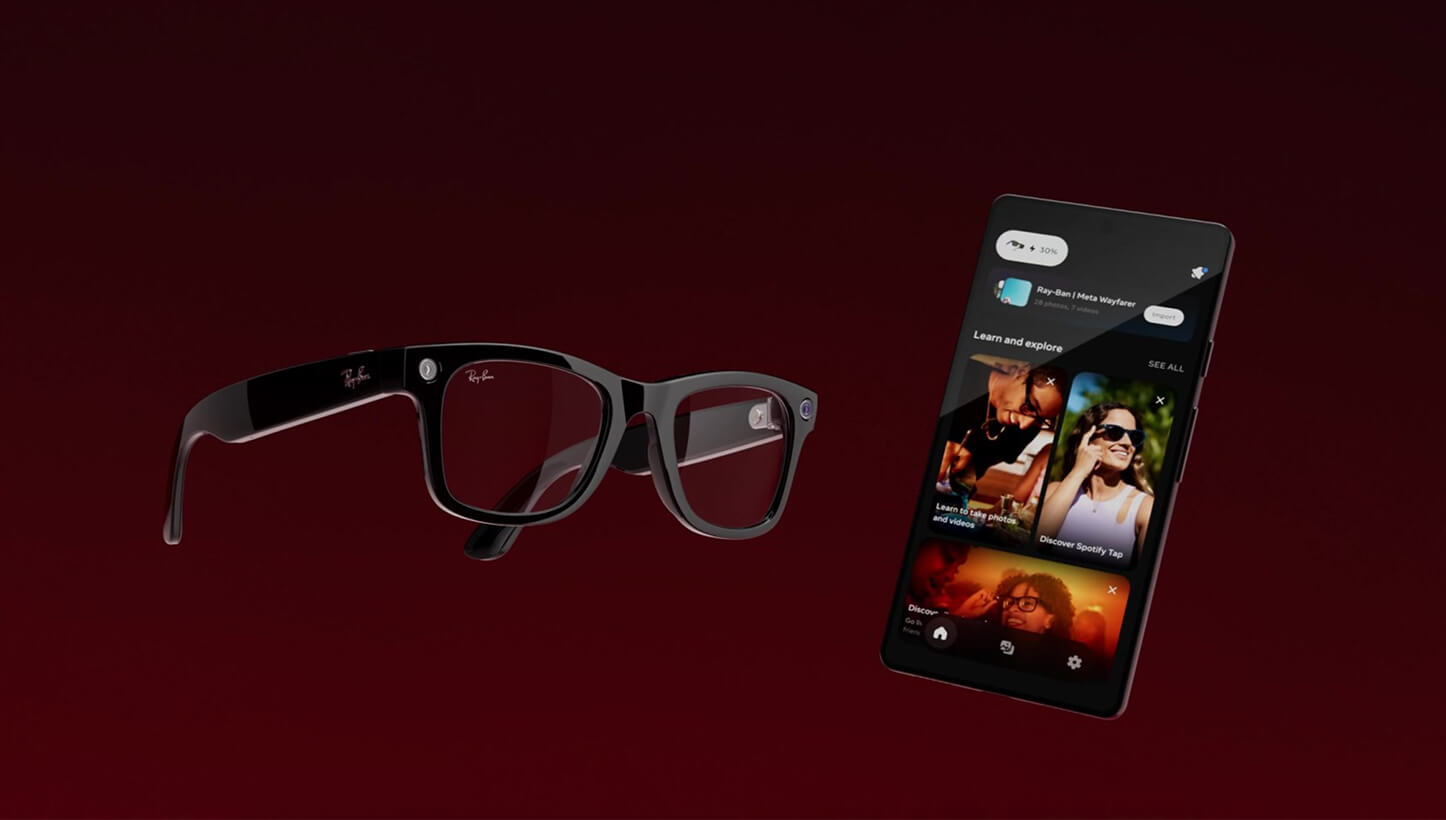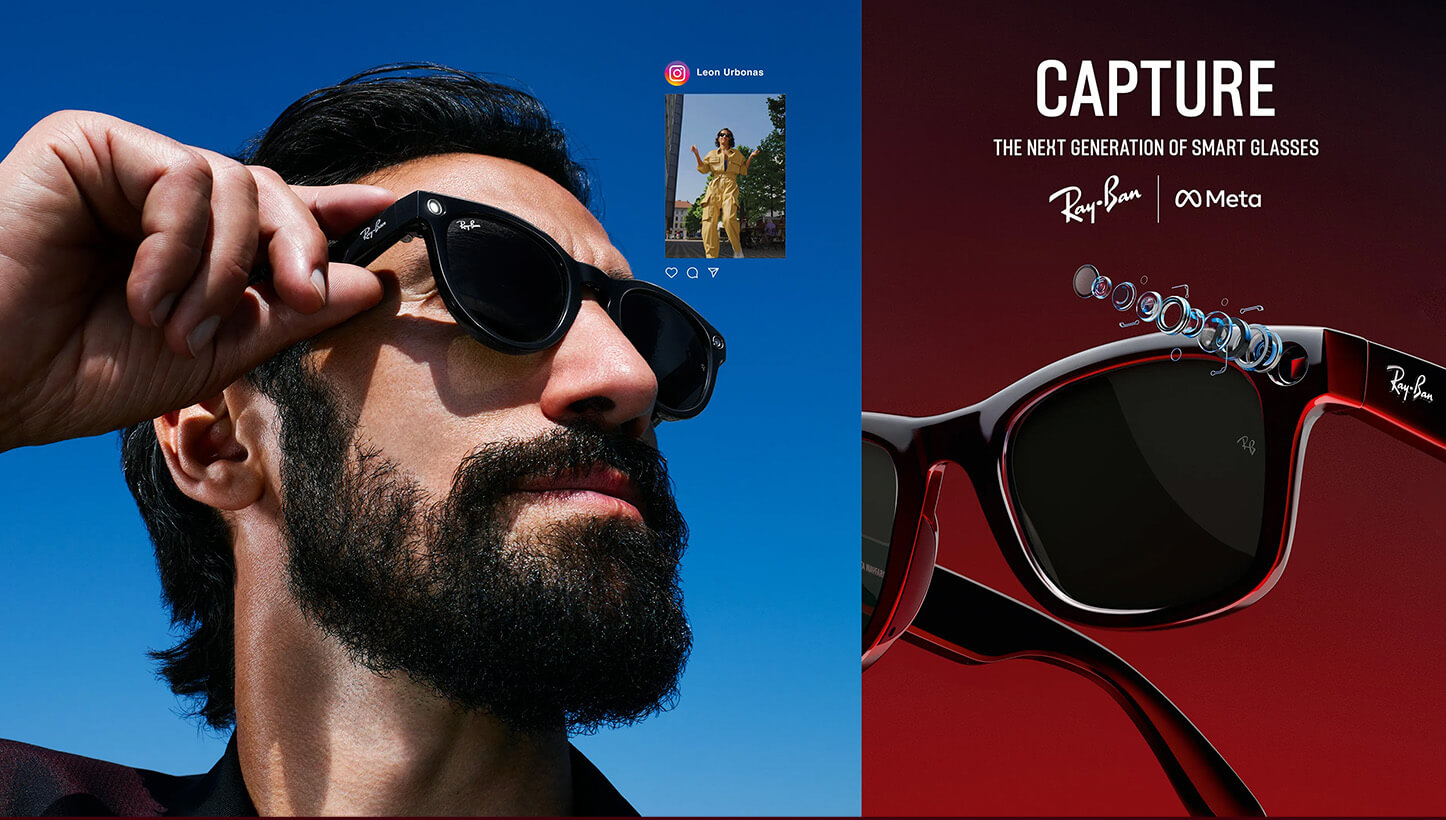Smart glasses - the future as a smartphone replacement
In today's world of technology, smart glasses seem to be a promising future that could revolutionize our everyday lives. Equipped with features such as integrated microphones, bone-sound audio playback and innovative displays, these devices could replace traditional smartphones. So why could smart glasses be the future? Here are a few reasons

New dimension of interaction
Smart glasses offer a new dimension of interaction by allowing users to use gestures, speech and other natural forms of communication.
We have also seen amazing advances in the field of artificial intelligence over the past year. Thanks to these technologies, our experiences with the digital world are becoming more intuitive and direct.
Integrated microphones and bone-sound audio

Although electronics are getting smaller every year, we have not yet managed to integrate all components into slim eyewear models. This became clear at this year's CES 2024, where journalists were given the Ray-Ban Meta model to test. Manufacturers focused on these glasses due to their brand recognition and their design, which integrates many functions into the housing of this model.
Integrated microphones allow for convenient use of voice assistants, and bone-sound speakers eliminate the need to wear headphones, but still provide average audio quality transmitted to our head via vibrations. This makes everyday communication more efficient and comfortable.
Screens in front of the eyes

This aspect came as quite a surprise to me, as 10 years have already passed since the introduction of Google Glass. These glasses already had a built-in display back then, which impressed many people, and despite the years that have passed, this technology has not evolved significantly.
The idea of a display, similar to the head-up display (HUD) in a car, takes on a new meaning with smart glasses. These displays in front of the user's eyes make it possible to project important information directly into the field of vision. Similar to cars, where a HUD displays important information such as speed or navigation, smart glasses can provide users with the data they need without them having to take their eyes off their surroundings.
For example, while walking through the city, we could receive information about historical sites, restaurant ratings or the availability of stores that we see in reality. Smart glasses are also changing the way we experience entertainment. With the ability to display video content or games right in front of our eyes, they open up completely new perspectives in the field of multimedia entertainment. It is as if we always have a private screen with us that is available everywhere. This connection between the virtual and real world opens up many possibilities.
Connection to the internet
Thanks to 5G technologies and eSIM, smart glasses could provide fast and reliable connectivity so that we can be online anytime, anywhere. This impacts our mobility and allows us to work, learn or entertain ourselves wherever we are.
Unlike smartphones, which are often a source of distraction, smart glasses allow users to focus on their surroundings while getting the information they need without having to constantly look at the screen.
Aesthetics and comfort

Glasses are a natural part of many people's wardrobes, which makes wearing smart glasses more socially acceptable than constantly holding a smartphone in your hand. They are also more comfortable, especially during physical activity.
Summary
Although we are not yet ready to fully transition from traditional smartphones to smart glasses, evolving technologies suggest that such a scenario is possible in our future. Transferring many of the functions we know from mobile devices to eyewear could mean a revolution in our everyday perception and use of technology
Time will tell how quickly this technology will develop and what amazing possibilities it will offer in the future. One thing is for sure: smart glasses are another step in the evolution of our relationship with technology.